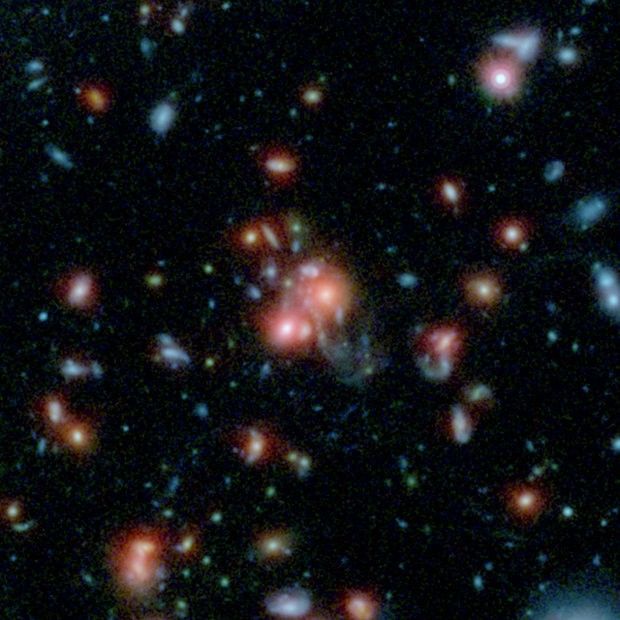A paper in The Astrophysical Journal describes a mammoth galaxy cluster that was only recently discovered with the help of the Hubble Space Telescope.
It might be that astronomers are quite used to finding new galaxy clusters, but this latest discovery took them quite by surprise nonetheless.
This is because, while most such collections of galaxies have a rather tranquil core, this most recent one, named SpARCS1049+56, has an oddly active galaxy at its center.
“An international team of astronomers has discovered a gargantuan galaxy cluster with a core bursting with new stars - an incredibly rare find.”
“The discovery is the first to show that gigantic galaxies at the centres of massive clusters can grow significantly by feeding off gas stolen from other galaxies,” scientists say.
The cluster is very large indeed
In their report in The Astrophysical Journal, the astronomers who discovered this previously unknown cluster describe it as packing at least 27 galaxies.
These galaxies are held together by gravity. Similarly, our Milky Way is gravitationally bound to a galactic family known as the Local Group.
Hubble Space Telescope data indicates SpARCS1049+56 sits at a distance of about 9.8 billion light-years from our Solar System.
As for its size, the newly discovered galaxy cluster is estimated to hold the mass equivalent to about 400 trillion Suns. This makes it quite a giant.
Just to put things into perspective, perhaps it should be mentioned that the mass of the Sun is 1.989 x 1030 kilograms. That's 333,000 times heavier than Earth.
The cluster has a hyperactive core
As mentioned, the Hubble Space Telescope detected intense star formation processes inside the gigantic galaxy that resides at the core of SpARCS1049+56.
Previously, it was believed that the galaxies at the center of such massive clusters only held old, dying or downright flat-lined stars. As it turns out, this is not always the case.
Scientists suspect that the reason the giant galaxy at the core of SpARCS1049+56 is a tad hyperactive is because of a merger with another galaxy somewhat smaller that itself.
This merger fueled the giant galaxy with new clouds of dust and gas, from which new stars began to form. With loads of dust and gas available, star formation went into overdrive.
The galaxy was observed producing stars at a rate of about 800 per year. By comparison, our Milky Way only births a couple of new stars during the same timespan.

 14 DAY TRIAL //
14 DAY TRIAL // 

